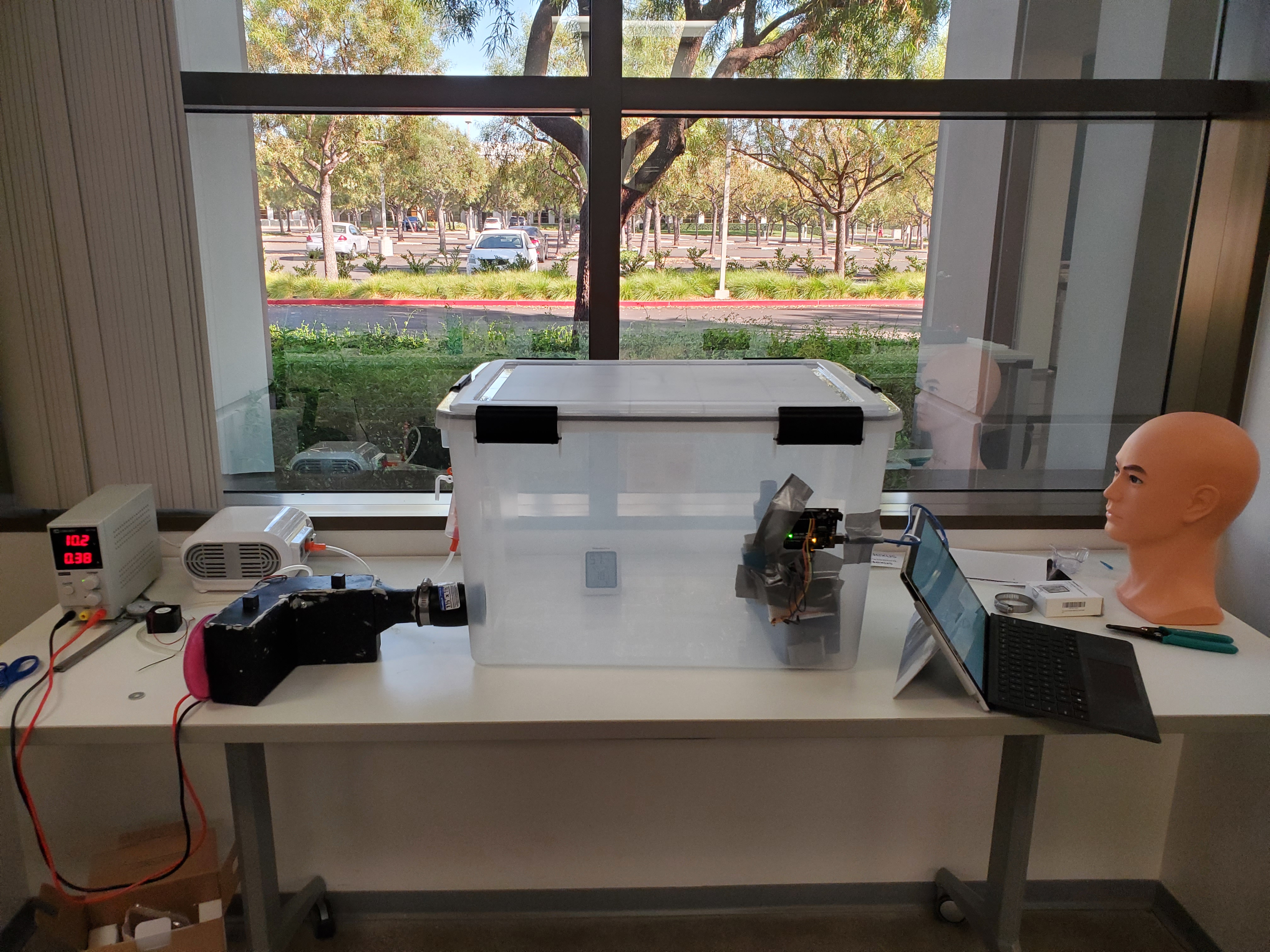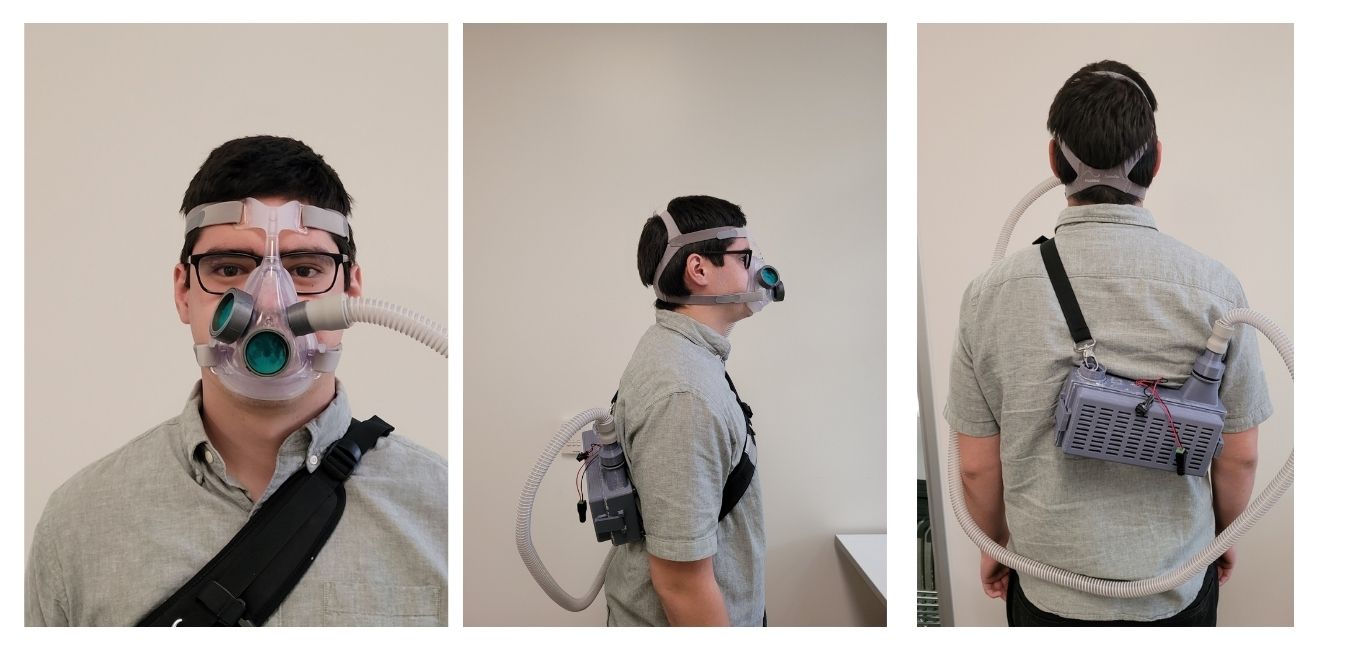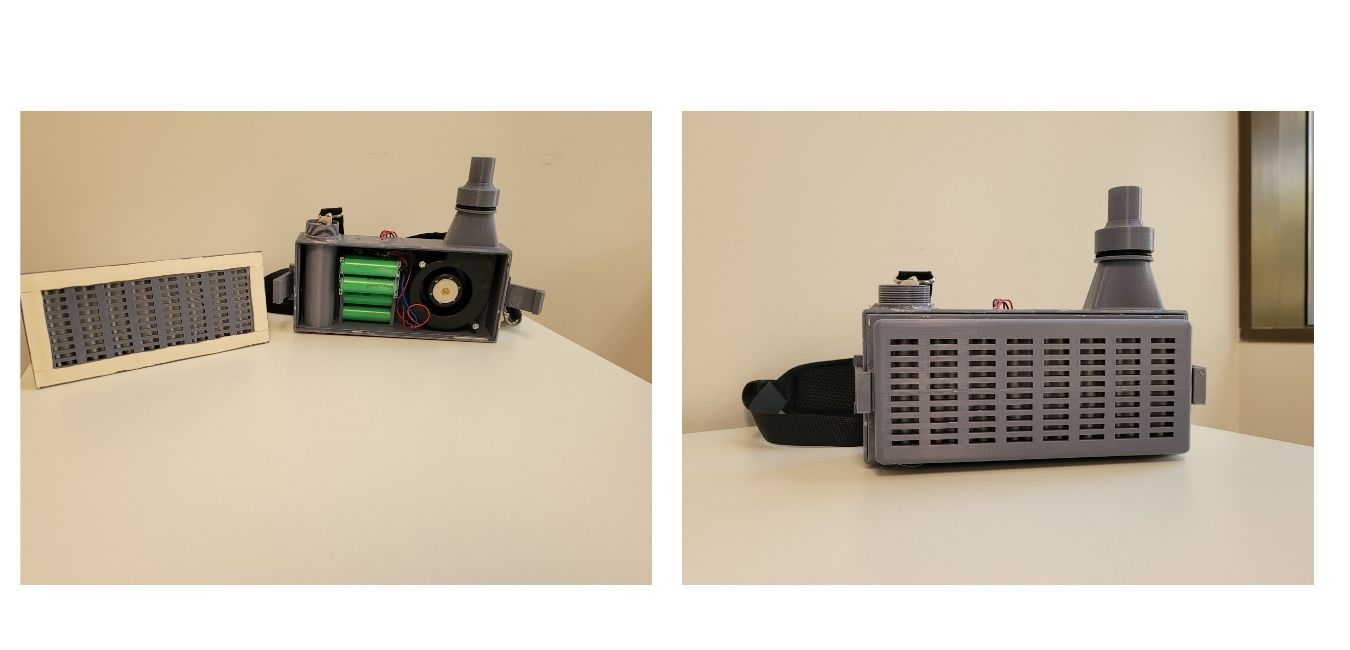Our COVID-19 Response
The Belle Aire PAPR
With the recent COVID-19 pandemic, our team is dedicated to help by any means. As such, our team is working with UCI engineering faculty to produce a PAPR system for both healthcare workers and general consumers. Our current PAPR provides safety and comfortability at an affordable price tag that’s perfect for the general consumer. The Belle Air PAPR enclosure is fitted with our custom filter cartridge that leverages off the shelf air filters. A compatible centrifugal fan is powered with our custom rechargeable battery; allowing for 8 hours of filtered airflow (~ 6-8 CFM) output from the Belle Air facemask.
Our current goal is to package our PAPR system in a helmet form factor to fit the needs of our frontline healthcare workers.
PAPR Donning Demo
Filtration Testing
The most important testing for a PAPR is the filtering efficiency. We designed our testing setup based off the ASTM F2299 standard. However, since we have a tight budget, the actual equipment we used is quite different. We used two PMS (Particulate Matter Sensors) capable of detecting particles below 1 micron diameter to detect the particle count difference between inside and outside our PAPR. To simulate a particulate laden environment, we used a nebulizer with saline solution.

Airflow Testing
NIOSH standards for PAPR devices state that loose fitting PAPRs must maintain at least 6 CFM airflow while tight fitting PAPRs must maintain at least 4 CFM. While many fans are capable of airflow values far above this, effective filters can have high pressure drops which means the fans also need to have high static pressure. Due to our goal of making a cheap device, our choice of fans were very limited. So we experimented with different filters including pleated filters, 3M P100 filters, and Teleflex bacterial/viral filters. An important part of airflow testing is a Venturi tube custom made for your pipe diameter.
Using a manometer in combination with one of these lets you calculate the volumetric flow rate using Bernoulli's principle.
Results
Thanks to testing done by the Wang group at Missouri S&T we were able to find some off the shelf filters that worked decently. Using three layers of 3M Filtrete 1900 MPR HVAC filters in our custom cartridge; we were able to maintain above 92% filtering of PM 1.0 particulates. This is also while maintaining adequate airflow according to NIOSH standards (above 6 CFM for loose fitting PAPRs.)
We found that 3M HVAC pleated filters provided by far the best airflow with our fan. The increased surface area provided by the pleats allow you to run your fan at lower power which also decreases noise generated by the PAPR. One important note was that using filters not designed for higher airflow can be dangerous. While Teleflex performed at their rated 99% filtering at 2 CFM; increasing the airflow made the filtering less effective than some normal masks. If the filters you are trying to use for a powered respirator are not designed for high airflow, we reccomend to not use them or perform extensive testing first.
If you would like to compare the airflow performance of the filters we tested, you can find numbers here. If you have any questions about the project, please do email one of our team members whose emails can be found on the team page.



